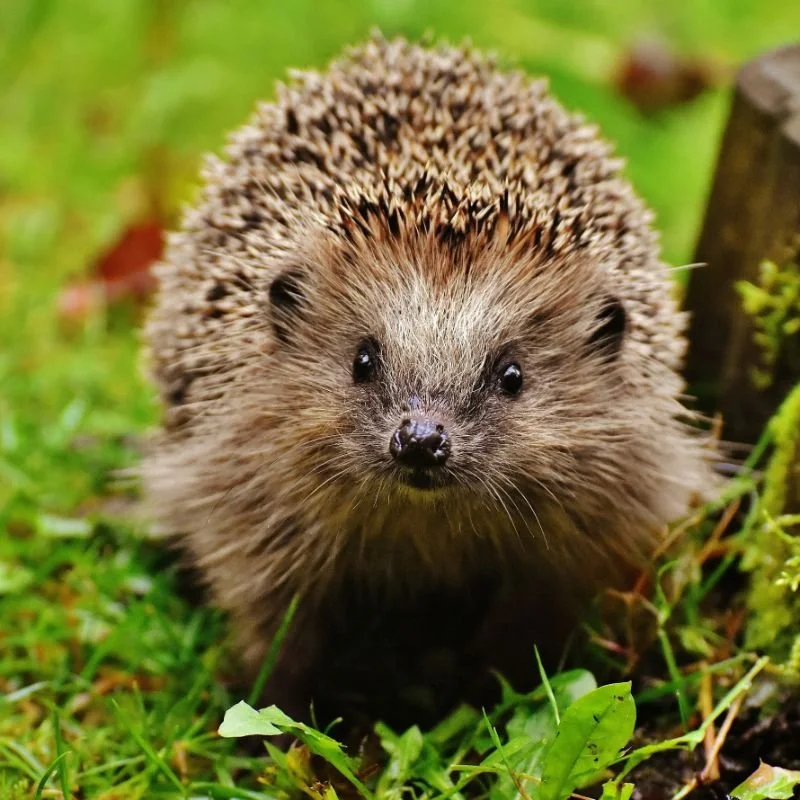Do Hedgehog Quills Hurt When You Touch Them
Wondering do hedgehog quills hurt when you touch them? Learn about hedgehog spine safety, proper handling techniques, and what to expect.
Well, butter my biscuit! If you've ever laid eyes on a hedgehog, you've probably wondered about those spiky little fellas and whether petting one would feel like hugging a cactus. It's a fair question, really. After all, Mother Nature didn't deck these critters out in what looks like medieval armor for nothing! The burning question "do hedgehog quills hurt when you touch them" has crossed the minds of countless animal lovers, potential pet owners, and curious kids who've spotted these prickly balls in gardens or pet stores. So, let's dive into the nitty-gritty of hedgehog quills and find out if these adorable creatures are as painful to touch as they look, or if there's more to their spiky story than meets the eye!
The Anatomy of a Hedgehog's Spiky Suit
What Exactly Are We Dealing With Here?
First things first, let's get our terminology straight. While many folks call them "quills," hedgehog spines are actually modified hairs. Yep, you heard that right! These aren't the same as porcupine quills, which are a whole different kettle of fish. Each spine is made of keratin, the same protein that makes up your fingernails and hair. Pretty cool, huh?
A typical hedgehog sports anywhere from 5,000 to 7,000 of these spines covering their back and sides. That's like having a personal army of tiny soldiers standing at attention! These spines are:
About 2-3 centimeters long (roughly an inch)
Hollow inside, making them lightweight
Firmly attached to the hedgehog's skin
Cream-colored with dark bands
Replaced throughout the hedgehog's life
The Science Behind the Spike
Looking at a hedgehog spine under a microscope is like peering into nature's engineering marvel. Each spine has a smooth surface and tapers to a point, but here's the kicker: they're not barbed like porcupine quills. This means they won't stick in your skin and are much easier to handle safely.
The base of each spine sits in a follicle with a tiny muscle attached. When a hedgehog feels threatened, these muscles contract, making the spines stand erect. It's like having thousands of tiny drawbridges that can be raised at will!
Do Hedgehog Quills Hurt When You Touch Them: The Truth Revealed
When Relaxed Meets Reality
Here's the scoop: when a hedgehog is calm and relaxed, their spines lie flat against their body, pointing backward. In this state, petting a hedgehog feels somewhat like touching a hairbrush. Sure, it's not exactly silky smooth, but it's not painful either. Running your hand along the direction of the spines (from head to rump) is surprisingly pleasant!
However, trying to pet against the grain? Well, that's asking for trouble! It's uncomfortable for both you and the hedgehog. Think of it like petting a cat the wrong way, except with more pointy consequences.
The Defensive Position Dilemma
Now, when a hedgehog gets spooked, that's when things get interesting! They'll:
Raise their spines to stand straight up
Puff up their body to appear larger
Curl into a tight ball if really frightened
Make huffing or clicking sounds
In this defensive state, yes, those quills can hurt! It's not excruciating pain, mind you, but more like being poked by several toothpicks simultaneously. The sensation is sharp and uncomfortable enough to make most predators (and humans) think twice.
Factors That Influence the Ouch Factor
Age Matters More Than You'd Think
Baby hedgehogs (called hoglets, adorably enough) have softer, more flexible spines that are less likely to cause discomfort. As they grow, their spines become harder and more rigid. Adult hedgehog spines pack more of a punch than their younger counterparts.
Individual Hedgehog Personalities
Just like people, hedgehogs have unique personalities! Some are naturally more relaxed and trusting, keeping their spines down most of the time. Others are nervous Nellies who spike up at the slightest provocation. Getting to know your hedgehog's temperament is key to comfortable handling.
Environmental Factors
A stressed hedgehog equals raised spines. Things that might stress them out include:
Loud noises
Sudden movements
Unfamiliar scents
Being too cold or too hot
Feeling exposed or vulnerable
Proper Handling Techniques: The Art of the Hedgehog Hold
The Scoop Method
Want to pick up a hedgehog without turning your hands into pincushions? Try this:
Cup your hands together, palms up
Gently scoop under the hedgehog's belly
Support their weight evenly
Keep your movements slow and steady
The soft belly fur against your palms feels quite nice, actually! No spines to worry about on their underside.
The Blanket Technique
For extra spiky hedgehogs, using a small blanket or towel works wonders:
Drape the fabric over the hedgehog
Gently wrap and lift
Wait for them to uncurl
Gradually introduce bare-hand contact
Building Trust Takes Time
Rome wasn't built in a day, and neither is a hedgehog's trust! Regular, gentle handling sessions help your prickly pal learn that you're not a threat. Start with just a few minutes daily and gradually increase the duration.
Do Hedgehog Quills Hurt When You Touch Them: Common Misconceptions
Myth #1: Hedgehogs Can Shoot Their Quills
Nope, nada, not happening! Unlike their porcupine cousins, hedgehogs can't launch their spines like tiny missiles. The spines stay firmly attached unless they're being shed naturally.
Myth #2: All Spines Are Razor-Sharp
While they're certainly pointy, hedgehog spines aren't like needles or razor blades. They're more comparable to the end of a toothpick – sharp enough to be uncomfortable but not typically sharp enough to pierce skin easily.
Myth #3: You Can Never Touch a Hedgehog Safely
Balderdash! Thousands of hedgehog owners worldwide handle their pets daily without injury. It's all about technique, timing, and trust.
What Happens If You Get Poked?
The Immediate Sensation
Getting poked by hedgehog spines feels like:
Multiple pinpricks
Similar to touching a stiff brush too firmly
A sharp, brief discomfort
Rarely breaks the skin
Most people describe it as surprising more than painful. The anticipation is often worse than the actual sensation!
Potential Reactions
Some folks might experience:
Temporary red marks
Slight swelling if you have sensitive skin
Minor itching
Rarely, small puncture wounds
First Aid for the Overly Enthusiastic
If you do manage to get a proper poke:
Wash the area with soap and water
Apply antiseptic if skin is broken
Use a cold compress for any swelling
Monitor for signs of infection (unlikely but possible)
Special Considerations for Different Groups
Children and Hedgehogs
Kids often ask, "Do hedgehog quills hurt when you touch them?" with a mix of excitement and trepidation. For young handlers:
Always supervise interactions
Teach proper handling techniques first
Start with observation before touching
Use the blanket method initially
Make it a learning experience about respecting animals
Elderly or Those with Sensitive Skin
Folks with thinner or more sensitive skin might find hedgehog spines more uncomfortable. Consider:
Wearing thin gloves initially
Focusing on belly rubs when the hedgehog is relaxed
Keeping handling sessions shorter
Using extra cushioning when holding
People with Compromised Immune Systems
While rare, hedgehogs can carry bacteria. Those with weakened immune systems should:
Consult their doctor first
Practice excellent hygiene
Consider observation over handling
Wear protective gloves if handling
The Bonding Experience: Beyond the Prickles
Why Bother If They're Prickly?
Great question! Despite their spiky exterior, hedgehogs can be incredibly rewarding pets:
They're curious and entertaining
Each has a unique personality
They can recognize their owners
Watching them explore is delightful
They make adorable snuffling sounds
Signs Your Hedgehog Is Comfortable
When your hedgehog trusts you, you'll notice:
Relaxed spines lying flat
Uncurling quickly when picked up
Exploring your hands and arms
Falling asleep in your lap
Accepting treats from your fingers
Comparing Hedgehog Spines to Other Animals
Hedgehog vs. Porcupine
While we're on the subject:
Porcupine quills: Barbed, detachable, genuinely painful
Hedgehog spines: Smooth, attached, mildly uncomfortable
Hedgehog vs. Echidna
Our Australian friends might wonder:
Echidna spines: Thicker, more robust
Hedgehog spines: Thinner, more numerous
Tips for Minimizing Discomfort
Timing Is Everything
Handle your hedgehog:
In the evening when they're naturally active
After they've had time to wake up
When the room is quiet and calm
After they've eaten (happy hedgehog = relaxed hedgehog)
Creating the Right Environment
Set yourself up for success:
Dim lighting helps them relax
Comfortable room temperature (72-80°F)
Familiar scents (wear the same perfume/cologne)
Consistent handling routine
Gear That Helps
Consider using:
Fleece handling gloves for beginners
Soft blankets for nervous hedgehogs
Treats to create positive associations
A secure, comfortable handling area
Health and Hygiene Considerations
Keeping It Clean
After handling your hedgehog:
Wash hands thoroughly
Clean any scratches immediately
Don't touch your face during handling
Keep handling areas sanitized
When to Be Extra Careful
Avoid handling when:
Your hedgehog is quilling (losing baby spines)
They're showing signs of illness
You have open wounds on your hands
They're in a particularly grumpy mood
Conclusion
So, do hedgehog quills hurt when you touch them? The answer isn't black and white, but rather a lovely shade of "it depends!" With proper handling techniques, patience, and respect for these spiky little creatures, most people find that hedgehog spines are more of a minor inconvenience than a major pain. The joy of bonding with these unique pets far outweighs the occasional poke. Remember, every hedgehog is different, and building trust takes time, but the reward of a relaxed, happy hedgehog in your hands is absolutely worth it!
Read next: 15 Guinea Pig Bedding Ideas for Comfort and Cleanliness
Frequently Asked Questions
Q1: Can hedgehog spines cause allergic reactions in some people?
A: Yes, some people may experience mild allergic reactions to hedgehog dander or saliva.
Q2: How often do hedgehogs shed their spines naturally?
A: Adult hedgehogs lose individual spines regularly, replacing them throughout their entire lifetime gradually.
Q3: Do baby hedgehogs have softer spines than adults?
A: Absolutely! Baby hedgehog spines are noticeably softer and more flexible than adult spines.
Q4: Can wearing gloves prevent all discomfort when handling?
A: Gloves help significantly but won't eliminate all sensation from defensive spine positioning completely.
Q5: Is it normal for spines to feel different seasonally?
A: Yes, spines may feel slightly different during temperature changes or seasonal transitions actually.

































